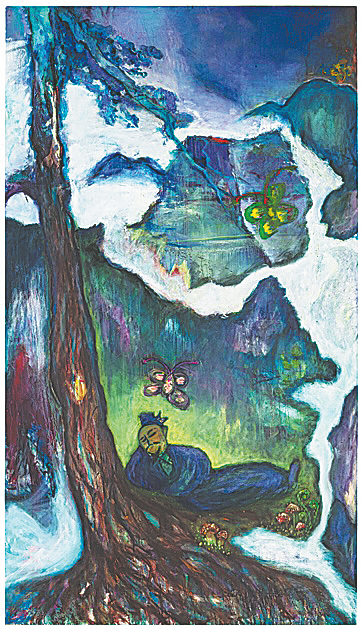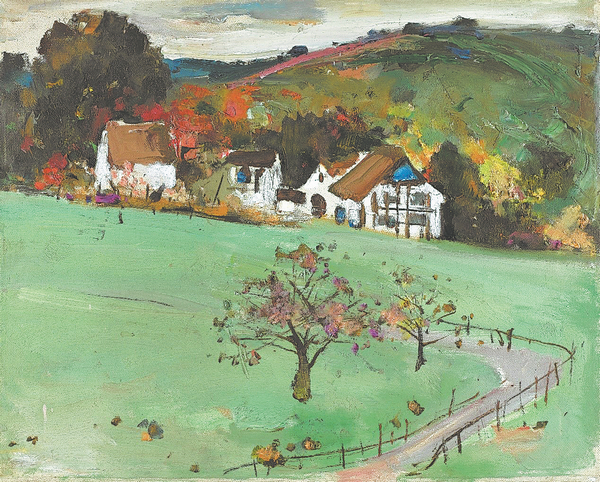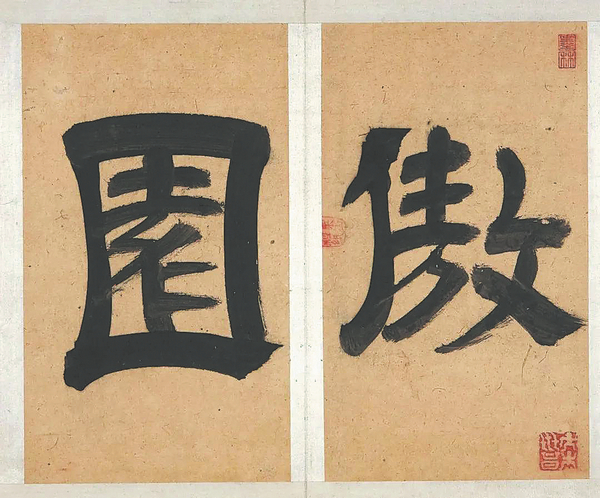

Genuine words
Art Critique at the Art Museum of the Beijing Fine Art Academy until Dec 3 is a unique show that juxtaposes the work of resident painters with the critiques of scholars. It is a presentation of recent sketches and finished pieces, and gives viewers a glimpse into the critical perspective to better understand art.
The artists on show are drawn from the academy's four workshops on oil painting and three genres of Chinese paintings — mountain and water, flower and bird, and figure. Pairing pieces with their critiques is a gesture by the academy to display the resident artists' improvements and help visitors cultivate artistic discernment.
9 am-5 pm, closed on Mondays.12 Chaoyang Gongyuan (Park) Nanlu, Chaoyang district, Beijing.010-6502-5171.

Wandering strokes
In her paintings, Yu Lian tries to visualize the Xiaoyao You, a text from the Zhuangzi, a compilation of the thoughts of the Taoist philosopher Zhuangzi (or Zhuang Zhou), who lived around the 4th century BC. Yu adds layers of highly saturated colors to lend her pieces a surrealist feel in a nod to the carefree state of forgetting about oneself and becoming one with the universe described in the Xiaoyao You.
Her quest for a sensible mind and a peaceful heart keeps Yu busy painting, endeavors she is now sharing in her solo exhibition, Painting Zhuangzi, at the Today Art Museum until Sunday. Not only does she adopt a figurative approach to interpreting Zhuangzi's Taoist theories, she also employs abstract strokes to give the classic texts a modern feel.
10 am-6 pm, closed on Mondays.32 Baiziwan Lu, Chaoyang district, Beijing. 010-5876-0600.

Small landscapes
One of the conveniences of the digital age is that it allows people to see life in other parts of the world, so, when earlier this month, people in southern China were still wearing summer outfits, people in Northeast China's Heilongjiang province were already enjoying the snowball fights. Visitors can find similar delights at Wandering on the Earth, an exhibition of landscapes from the collection of the National Art Museum of China, which includes dozens of vivid scenes from around the world, capturing different seasons. It is also a celebration of technical sophistication, as the paintings measure only a few dozen centimeters in size.
Running at the National Art Museum of China until Dec 5, the exhibition evokes a sensation of woyou (literally "lying down and traveling"), an old term that refers to the journey taken in the mind upon appreciating a landscape painting.
9 am-5 pm, closed on Mondays.1 Wusi Dajie, Dongcheng district, Beijing. 010-6400-1476.

Galloping lines
The Tianjin Museum traces the evolution of Chinese calligraphy during the Ming (1368-1644) and Qing (1644-1911) dynasties in a display of its collection from the period.
Developing over thousands of years, calligraphy became an integral part of Chinese art, achieving high levels of artistry and spirituality, embodying the personality and mentality of calligraphers. Its brilliance is formally presented in poems, couplets and essays, and sometimes privately in the form of short notes and the exchange of correspondence.
Calligraphy reveals the rhythms of the calligraphers as they direct their brush across the paper with strength and ease, as well as the order and sense they wished to express, which connects people today with the spiritual haven that the intellectuals of the past created for themselves.
9 am-5 pm, closed on Mondays.62 Pingjiang Dao, Hexi district, Tianjin. 022-8388-3000.